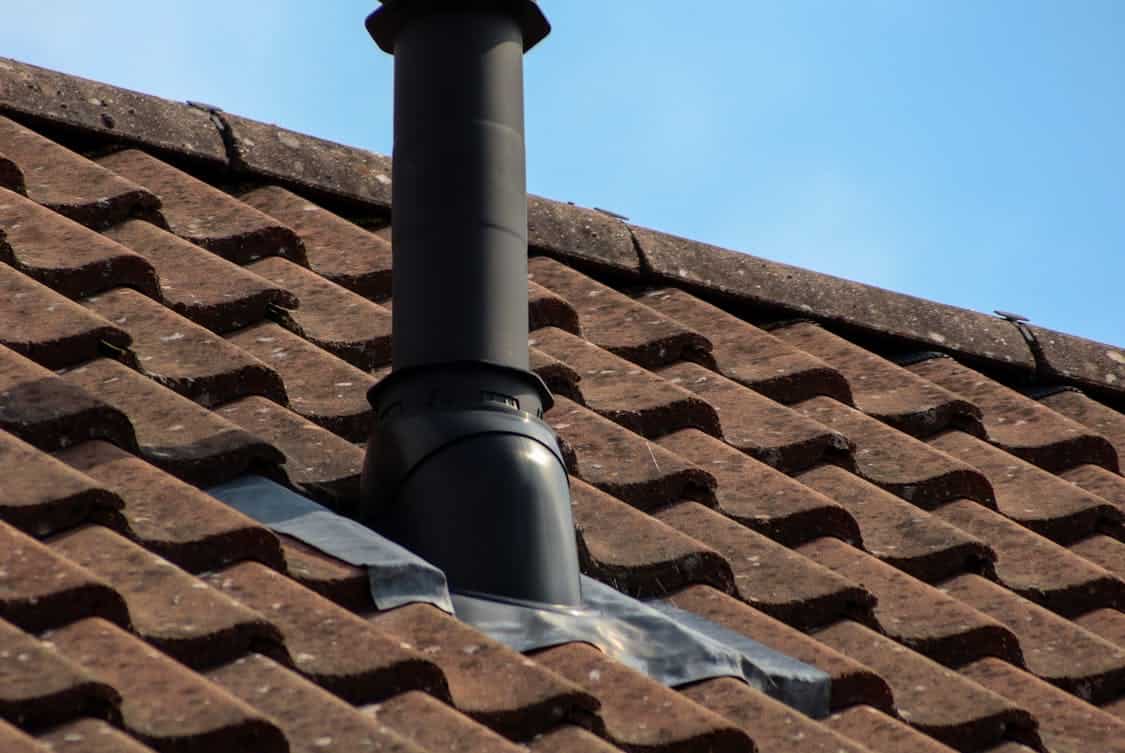
A tired roof can go from quiet to loud very fast, and spotting warning signs early keeps small fixes from turning into full-scale replacements. Homeowners who act fast often avoid nasty surprises like sagging ceilings, mold blooms, or expensive interior repairs.
Some problems shout out plainly, while others whisper in attic corners or gutters, demanding a sharper eye and a quick call. Readiness to react when red flags appear helps protect a house’s value and the people who live beneath its cover.
Visible Leaks And Water Stains
Water stains on ceilings or walls are clear red flags that water is finding its way past the outer barrier, and they tend to spread if left unattended. A single brown ring can mean a tiny leak, but multiple patches or dark, spreading stains suggest active, possibly worsening penetration.
Watch for bulging paint, sagging drywall, or damp insulation in attic spaces; these are signs that moisture has moved beyond surface cosmetic issues. Time is not on your side with moisture, because trapped water invites rot and mold that compound repair costs.
Missing, Curled, Or Broken Shingles
Shingles that are gone, curled at the edges, or cracked present an open invitation for wind and water to reach the roof deck, and that invitation is one you don’t want to accept. Wind uplift can pry up weakened shingles, turning a handful of losses into exposed underlayment and fast-traveling leaks.
Look for bare spots on ridges and around roof valleys where wear concentrates, and check for shards in walkways or gutters that betray recent storm damage. A timely shingle patch or partial re-cover prevents wider damage and keeps the roof performing as intended.
Excessive Granules In Gutters
When asphalt shingles shed their protective granules, those tiny pieces end up in gutters and downspouts and tell a bigger tale about roof aging. A steady flow of granules after storms or during heavy wind spells signals that the shingle surface has thinned, lowering UV and moisture resistance.
Open gutters clogged with this grit choke drainage paths and cause standing water that accelerates edge rot and fascia damage. Clearing gutters and tracing the granule source helps homeowners know whether a repair will suffice or a larger replacement looms.
Sagging Roof Deck Or Roofline
A sag in the deck or an uneven roofline is not a subtle hint; it is a structural problem that merits immediate action to prevent collapse or severe interior harm. Sagging can stem from prolonged leaks that have rotted rafters, from overloaded insulation that holds moisture, or from roof framing that has shifted under stress.
Spotting a depression while walking the yard, or seeing a bowed ceiling inside, should prompt a fast, professional assessment of framing and sheathing.
Local businesses often turn to commercial roofing waterboro for inspections and repairs that ensure both safety and structural integrity. Left unexamined, a drooping roof invites further injury to everything beneath it and raises the stakes for repairs.
Damaged Flashing Around Chimneys And Vents

Flashing seals the vulnerable seams where roofing meets chimneys, skylights, and vents, so when flashing tears, lifts, or rusts, the joints that were once watertight become weak spots. Metal flashing that has pulled away or cracked lets wind-driven rain slip under shingles and down into insulation and framing.
Properly sealed flashing often avoids full-roof work, but corroded or poorly installed pieces need skilled repair fast to stop active leaks. A quick patch may hide the issue; a careful replacement at these seams keeps trouble contained.
Mold, Mildew, Or Rot In The Attic
Attic odors, dark streaks on rafters, or spongy wood are indicators that moisture has overstayed its welcome and begun biological and structural decay. Mold and mildew discolor wood and insulation, and continued wetness turns load-bearing elements soft, compromising the roof’s support.
Inspectors use moisture meters and probes to find hidden wet pockets, because surface checks alone cannot reveal how deep the problem runs. Addressing attic moisture quickly helps preserve insulation value and cuts the risk of widespread rot.
Interior Ceiling Stains And Paint Peeling
Peeling paint and spreading ceiling stains speak to water migration past the roof layer and into living spaces, often appearing well after the roof first suffered an insult. A brown halo on the ceiling is a tip-off that water followed framing or wiring channels, and paint that bubbles or flakes signals recurring wet-dry cycles that degrade finishes.
When stains appear, test for dampness and probe surrounding areas for softness or mold growth before making cosmetic fixes. Fixing the leak first, then restoring the interior, keeps repairs from unravelling in short order.
Daylight Through Roof Boards Or Cracks
Seeing daylight through roof boards from the attic is a literal flashing warning light: gaps allow the elements in and let heat or cooled air escape out, adding up on utility bills and onboard damage. Small holes suggest missing fasteners or punctured underlayment and invite pests, rain, and snow into protected cavities.
A thorough attic sweep for pinprick light, loose nails, or torn felt helps map the problem and prioritize fast sealing or patching work. Sealing open spots restores the barrier that shields insulation and framing from repeated harm.
Ice Dams, Icicles And Frozen Gutters
Ice dams form when warm roof areas melt snow that refreezes at eaves, building up dams that back up meltwater under shingles and into attics, producing leaks that often show up as ceiling stains. Heavy icicles and packed ice in gutters signal poor ventilation, inadequate insulation, or blocked drainage, any of which puts the roof at risk of concentrated freeze-thaw damage.
Clearing gutters, improving airflow, and addressing thermal bridging in roof cavities reduce the likelihood of repeat freeze events. Tackling ice-related issues early prevents the kind of slow, seasonal assault that erodes roof layers over time.

